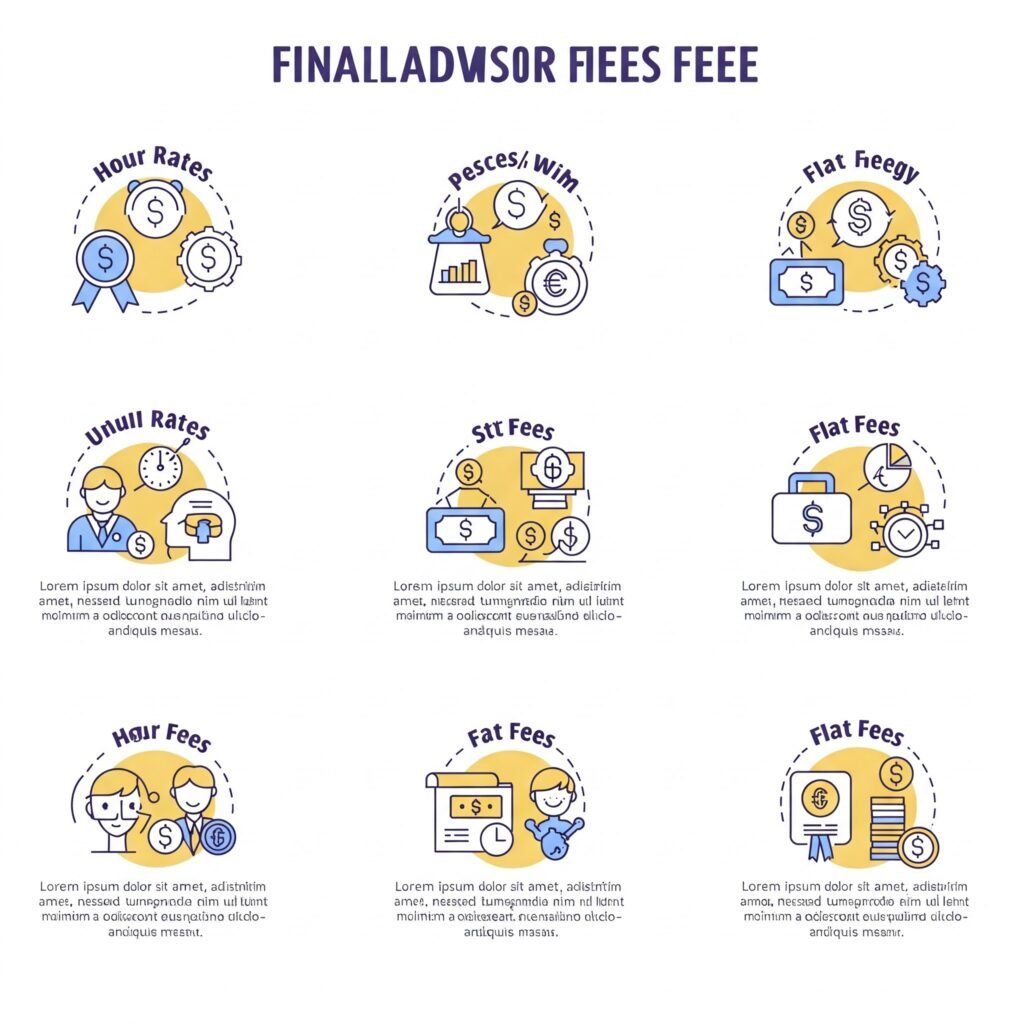Welcome, savvy readers! As someone who’s spent years navigating the world of online content and helping millions understand complex topics, I know that when it comes to your money, clarity is key. That’s why today, we’re diving deep into a crucial aspect of financial planning: financial advisor fees. If you’ve ever wondered what you’re really paying for when you work with a financial advisor, you’re in the right place. Understanding these financial advisor fees is essential for making informed decisions about your financial future.
Why Clarity on Financial Advisor Fees is Crucial
Choosing a financial advisor is a pivotal step towards achieving your financial goals. Whether you’re planning for retirement, saving for a down payment, or simply seeking guidance on managing your investments, a good advisor can provide invaluable support. However, the cost of this guidance is a significant factor to consider. Without a clear understanding of financial advisor fees, you might be unknowingly eroding your returns or paying for services you don’t need. Transparency around financial advisor fees empowers you to choose the right advisor and fee structure for your unique circumstances.

Exploring Different Fee Structures for Financial Advisors
Navigating the world of financial advisor fees can feel like deciphering a secret code. Let’s break down the most common fee structures you’ll encounter:
- The Fee-Only Model: Transparency FirstThis model is often considered the most transparent. Fee-only advisors charge a direct fee for their services. This fee can be structured in several ways:
- Assets Under Management (AUM) Fees: This is a percentage of the total value of your investment accounts that the advisor manages. For example, an advisor might charge 1% AUM annually. On a $500,000 portfolio, this would be $5,000 per year.
- Hourly Financial Advisor Fees: Some advisors charge an hourly rate for consultations or specific projects, similar to lawyers or accountants. This can be beneficial for one-time advice or limited engagements.
- Flat Financial Advisor Fees: Advisors may charge a fixed fee for specific services, such as creating a financial plan. This provides cost certainty upfront.
- The Fee-Based Approach: A Hybrid ModelThis model can be a bit more complex. Fee-based advisors charge fees directly to you (like fee-only advisors) but can also receive commissions from selling certain financial products like insurance or annuities. It’s crucial to understand how your advisor is compensated under this model to identify potential conflicts of interest.
- Commission-Based Compensation: Embedded CostsIn this model, advisors primarily earn money through commissions on the financial products they sell to you. While you might not see a direct fee deducted from your account, the cost is embedded in the product itself. It’s important to ask about all potential commissions your advisor might receive.
Understanding the Value: Services Covered by Advisor Fees
Understanding the different financial advisor fees is only half the battle. It’s equally important to know what services you’re receiving in exchange for those fees. These services can vary depending on the advisor and your specific needs, but often include:
- Comprehensive Financial Planning: Developing a detailed roadmap to achieve your financial goals, including retirement planning, investment strategies, tax planning, and estate planning.
- Professional Investment Management: Selecting, monitoring, and rebalancing your investment portfolio based on your risk tolerance and financial objectives.
- Personalized Financial Advice and Guidance: Providing expert advice on a wide range of financial topics, helping you make informed decisions at every step.
- Ongoing Support and Open Communication: Regular check-ins, performance updates, and easy access to your advisor for questions and concerns.
It’s crucial to have a clear conversation with your advisor about the specific services included in their financial advisor fees. Don’t hesitate to ask questions and ensure the services align with your needs.
Essential Questions to Ask About Financial Advisor Compensation
Transparency is paramount when it comes to financial advisor fees. Before you commit to working with an advisor, be sure to ask these crucial questions:
- How do you get paid? (Fee-only, fee-based, or commission-based?)
- What is your specific fee structure? (Percentage of AUM, hourly rate, flat fee, commission schedule?)
- Are there any additional fees involved? (e.g., transaction fees, custodial fees)
- What services are included in your stated fees?
- Can you provide a written breakdown of all potential costs?
- Do you operate under a fiduciary standard? (Fiduciaries are legally obligated to act in your best financial interest.) Link to a reputable source explaining fiduciary duty, e.g., the SEC website

Empowering Your Decisions: Tips for Navigating Advisor Fees
Choosing a financial advisor is a significant decision, and understanding their financial advisor fees is a critical part of that process. Here are some actionable takeaways to help you make informed choices:
- Shop Around and Compare: Don’t settle for the first advisor you encounter. Explore different options and their fee structures.
- Assess the Value Proposition: Carefully consider the services offered in relation to the fees charged. Does the value justify the cost?
- Don’t Shy Away from Negotiation: Especially with larger investment portfolios, there might be room to negotiate the fees.
- Regularly Review Costs and Services: Periodically assess whether your advisor’s fees and services continue to align with your evolving financial needs.
Conclusion: Taking Control of Your Financial Advisory Costs
Understanding financial advisor fees doesn’t have to be daunting. By familiarizing yourself with the different fee structures and asking the right questions, you can confidently choose a financial advisor who aligns with your best interests and helps you navigate your financial journey effectively. Remember, knowledge is power, especially when it comes to your money. Take the time to understand what you’re paying for, and you’ll be well on your way to a more secure and prosperous financial future.
Relevant Keywords: financial advisor fees, advisor fees, financial planning fees, investment advisor fees, fee-only advisor, fee-based advisor, commission-based advisor, AUM fees, hourly financial advisor, flat fee financial advisor, fiduciary duty.





